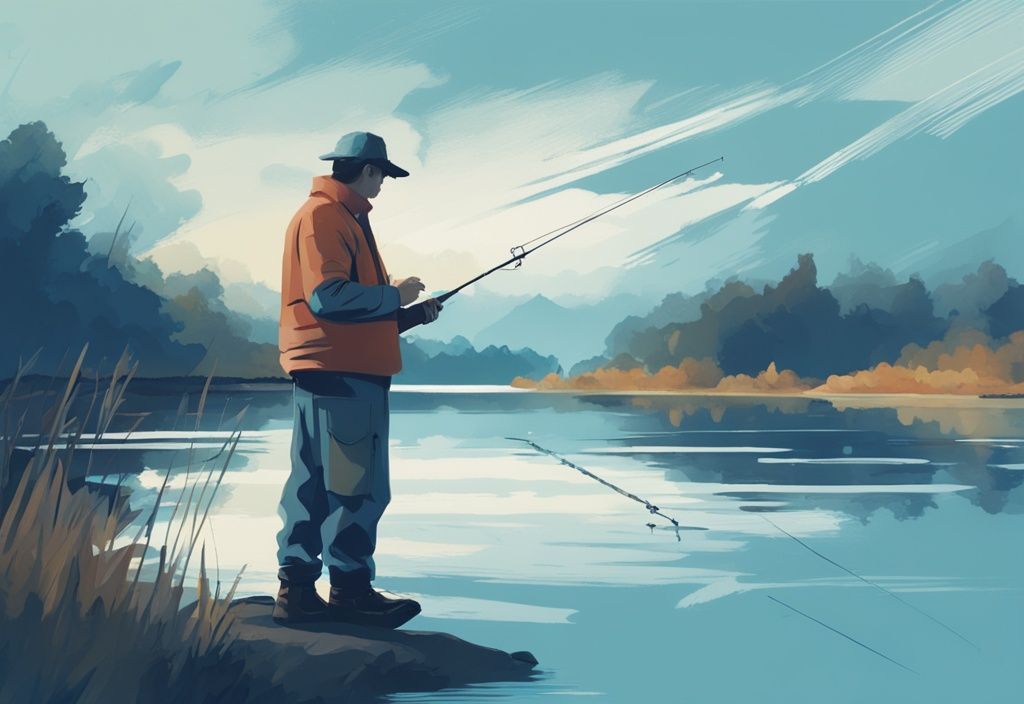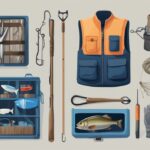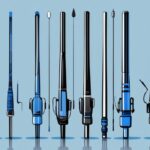Ever pulled in a prize catch just as the skies turn stormy? Or landed a whopper under clear blue skies and couldn’t understand why? Welcome to fishing my friend, where it’s not just skill, but also the “weather mood” that counts. By that, I mean barometric pressure, a key player affecting fish behavior.
In this comprehensive guide, we’ll dive into the best barometric pressure for fishing – your secret weapon to turn an average day on the water into a potential record-breaker. Understanding the ideal pressure ranges and how they impact the feeding habits and activity levels of your prey can greatly up your game.
So let’s navigate this all-important pressure puzzle together. After all, is there anything better than feeling that tug on your line knowing you’ve got the upper hand? Ready to conquer the atmospheric odds? Let’s reel in the knowledge!
Understanding Barometric Pressure and Its Influence on Fishing
What is Barometric Pressure and Why Does It Matter in Fishing?
Barometric pressure, also known as atmospheric pressure, is the force the atmosphere exerts on the Earth’s surface. This phenomenon significantly impacts fishing, affecting fish behavior, feeding habits, and activity levels. Knowing the best barometric pressure for fishing is crucial for anglers, helping predict fish movements and optimize fishing strategy.
Fish have swim bladders, specialized organs that help them regulate buoyancy. Changes in barometric pressure influence these swim bladders, causing fish to move to different depths to adjust. This movement is essential for their survival but also informs anglers when and where fish might be more active or dormant.
Uncovering The Science Behind Fish Behavior and Barometric Pressure
Fish possess remarkable sensory capabilities to detect barometric pressure changes primarily through their swim bladders and lateral lines. These pressure-sensitive organs enable fish to sense environmental changes, prompting them to modify their depth to stabilize internal conditions.
When barometric pressure fluctuates, fish seek areas where the pressure is more consistent, like deeper waters. This search for stability often shifts their activity and feeding patterns. Moreover, pressure changes can alter oxygen levels and water temperatures, indirectly influencing fish behavior. Understanding these dynamics is key for identifying the best barometric pressure for fishing, allowing anglers to select optimal times and locations for fishing expeditions.
Discovering the Ideal Barometric Conditions for Successful Fishing
Barometric pressure plays a crucial role in fishing success, influencing fish behavior and even changing how you approach your day on the water. From the sweet spot in the pressure range to understanding how rising and falling conditions can either make or break your fishing trip, there’s a lot to unpack. Let’s dive into the details!
Highlighting the Best Barometric Pressure Range for Fishing
Understanding the best barometric pressure for fishing can significantly improve your success rate. The optimal range lies between 29.90 and 30.90 inHg, especially when the pressure is rapidly falling. This range tends to make fish more active and likely to engage with bait. Conversely, pressure below 29.60 inHg or above 30.96 inHg often results in poor fishing conditions.
For those aiming for peak fishing performance, the “great” barometric range is slightly narrower, spanning from 29.80 to 30.45 inHg, which typically yields the best results. Picture this: you’re out on the lake, the pressure is just right, and you feel that distinct tug on your line. That’s the magic sweet spot!
Identifying the Benefits of Rising vs.
En este video, aprenderás cómo la presión barométrica afecta el comportamiento de los peces y cuáles son las mejores condiciones para pescar. Descubre por qué una presión alta en descenso es ideal para la pesca y cómo los cambios en la presión pueden influir en la actividad de los peces.
Falling Barometric Pressure for Fishing
The dynamics of rising and falling barometric pressure can also play a crucial role in fishing outcomes. Rising barometric pressure typically signals improving weather after a storm, making it a good time for fishing. As pressure increases, fish become more predictable and easier to locate. On the other hand, falling barometric pressure often correlates with approaching stormy weather, creating some of the best conditions for fishing.
During this time, fish are notably more active and aggressive in their feeding habits, increasing the likelihood of successful catches. Imagine the flurry of activity beneath the surface as fish sense the coming weather change—it’s prime time for a big catch!
Investigating How Different Pressure Levels Affect Fish Activity
Different levels of barometric pressure affect fish activity in unique ways, influencing where fish are found and how they behave. Let’s break it down:
Exploring the Impact of Low Pressure on Fishing
Low barometric pressure, falling below 29.60 inHg, generally brings cloudy or rainy weather, leading to slower fishing conditions. Fish tend to retreat to deeper waters or seek shelter near structural covers like rocks and vegetation. The trick in such conditions is to slow down your fishing techniques and focus on deeper areas where fish find stable environmental conditions.
This approach parallels high-pressure scenarios, emphasizing the need for patience and targeted fishing. Picture the scene: overcast skies, gentle rain, and you, waiting patiently by a rock formation, knowing the fish will come to you.
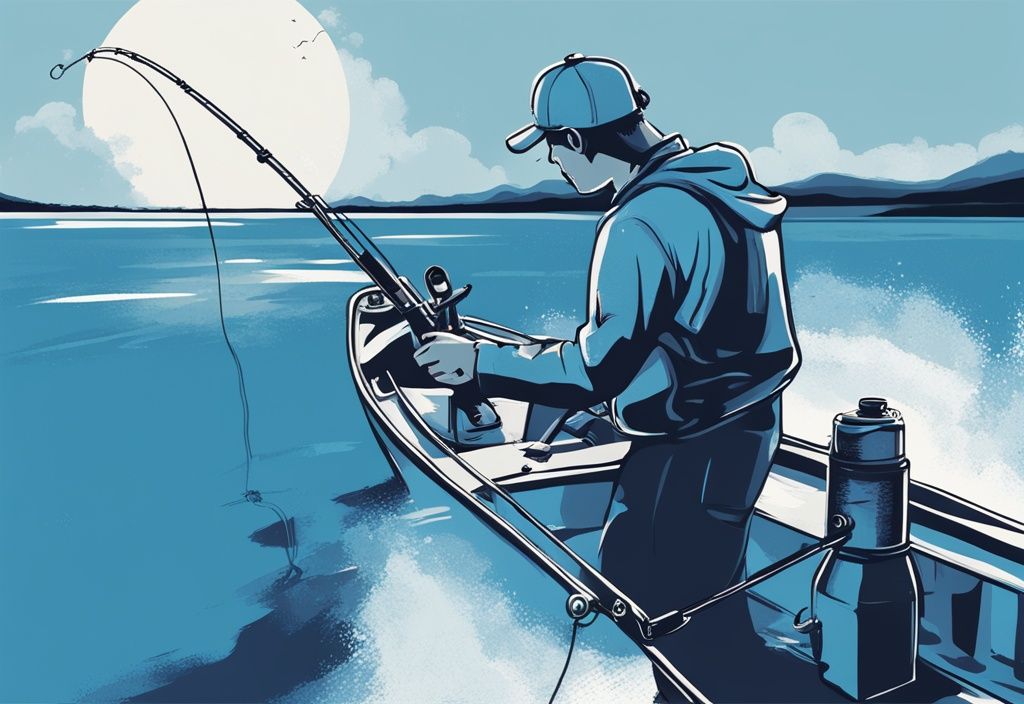
The Effects of Medium Pressure on Fishing
Medium barometric pressure, ranging from 29.70 to 30.40 inHg, usually aligns with fair weather conditions, making it an ideal time for fishing. This medium range encourages normal fish behavior and offers a great opportunity to experiment with various lures, baits, and fishing techniques.
The stable conditions enable anglers to explore different depths and locations, increasing the possibility of locating and catching fish. It’s the perfect day to cast your line, try out that new lure, and enjoy the steady rhythm of a good fishing session. The fish are biting, and the weather is just right—could it get any better?
Understanding the Role of High Pressure in Fishing
High barometric pressure, exceeding 30.50 inHg, often results in clear skies but slower fishing conditions. Under these circumstances, fish are less active and can be found in deeper waters or hiding near cover to avoid the impact of intense atmospheric pressure.
As with low pressure, the best approach involves slower fishing techniques and focusing on deeper water locations where fish feel more comfortable. Imagine the challenge: the sun’s high above, the water’s like glass, and you’re using every ounce of your expertise to coax a bite from those elusive fish hiding in the depths.
Learning Fishing Techniques for Various Barometric Pressure Settings
When it comes to fishing, understanding how barometric pressure influences fish behavior can give you a significant edge. Let’s dive into the specifics of tweaking your tactics depending on the pressure readings.
Tweaking Your Fishing Techniques Based on Barometric Pressure
Choosing the Most Effective Baits for Different Pressure Ranges
Selecting the appropriate bait makes all the difference when seeking the best barometric pressure for fishing. During periods of fluctuating pressure, fish can get a bit skittish and unpredictable. In these moments, natural baits like worms, minnows, or insect larvae are your best friends. They offer a familiar and irresistible allure to fish, dramatically boosting your chances of a catch.
Now, on those glorious days when the barometric pressure is stable, fish behavior becomes more predictable. That’s when you can pull out the artificial lures. These nifty gadgets mimic the movement and appearance of prey, inviting curious fish to bite. With stable pressure, fish are more likely to investigate, giving you the freedom to experiment with spinners, crankbaits, and jigs.
Mastering to Select Your Fishing Depths and Locations
Understanding where to cast your line based on barometric pressure is crucial for success. During low-pressure periods, fish tend to retreat to deeper waters where pressure remains consistent. High-pressure conditions also encourage fish to head for deeper realms or seek out structures like weeds and rocks. Slow and steady fishing in these concealed spaces can yield fantastic results.
When the pressure is in that comfortable middle range, say between 29.70 to 30.40 inHg, the weather is generally fair, and fish are likely to be found at shallower or intermediate depths. This is a golden opportunity to explore different parts of the waterbody. Techniques like trolling or casting nearshore can make your efforts pay off handsomely.
Extreme pressure fluctuations, either high or low, drive fish to seek cover. They hang around submerged logs, fishing piers, or clusters of aquatic plants for stability. Armed with the right bait—be it natural or artificial—targeting these spots can significantly increase your chances of a productive session.
Tackling Rapidly Changing Barometric Pressure: Tips and Tricks for Fishermen
Fishing during rapidly changing barometric pressure can be a rollercoaster, full of both opportunities and challenges. A fast-falling pressure typically means a storm is on its way, creating a period when fish are most active and aggressive. This is prime fishing time, so you better be quick to cast your line and capitalize on this peak activity window.
Conversely, when the pressure starts to climb after a storm, fish behavior changes. They might become less active and venture towards deeper, more stable waters. Patience is your ally here. Slow, methodical fishing in deeper areas with baits that require minimal movement can still lead to a successful catch. Consistency and calm are often the keys to victory during these rising pressure periods.
Integrating these strategies and understanding the impact of barometric pressure on fish behavior can transform a good fishing day into an unforgettable one. By adapting your techniques to align with the best barometric pressure for fishing, you ensure smarter, more efficient fishing, no matter what the atmospheric conditions might be.
Navigating Modern Tools for Monitoring Barometric Pressure
In the age of tech-enhanced fishing, modern tools for barometric pressure monitoring have become indispensable. Here’s how you can harness technology to boost your success on the water.
Harnessing Technology: Using Barometers and Weather Apps for Fishing
Advancements in technology have revolutionized how we monitor barometric pressure, significantly enhancing fishing success. One fundamental tool for this purpose is the barometer. Barometers provide accurate, on-site pressure readings, allowing us to make real-time adjustments to our fishing strategies. With the best barometric pressure for fishing often being between 29.90 to 30.90 inHg, having a barometer at hand can help pinpoint the optimal fishing moments.
Weather apps have also emerged as indispensable tools for modern anglers. These apps not only offer real-time updates on pressure changes but also provide comprehensive weather forecasts. Integrating this information, we can pre-plan our trips, choosing times when barometric conditions are most favorable. The apps often come with additional features such as radar imaging, wind speed measurements, and tide schedules, offering a holistic view of the fishing environment. Combining data from barometers and weather apps ensures you’re well-prepared and strategically positioned for a successful fishing outing.
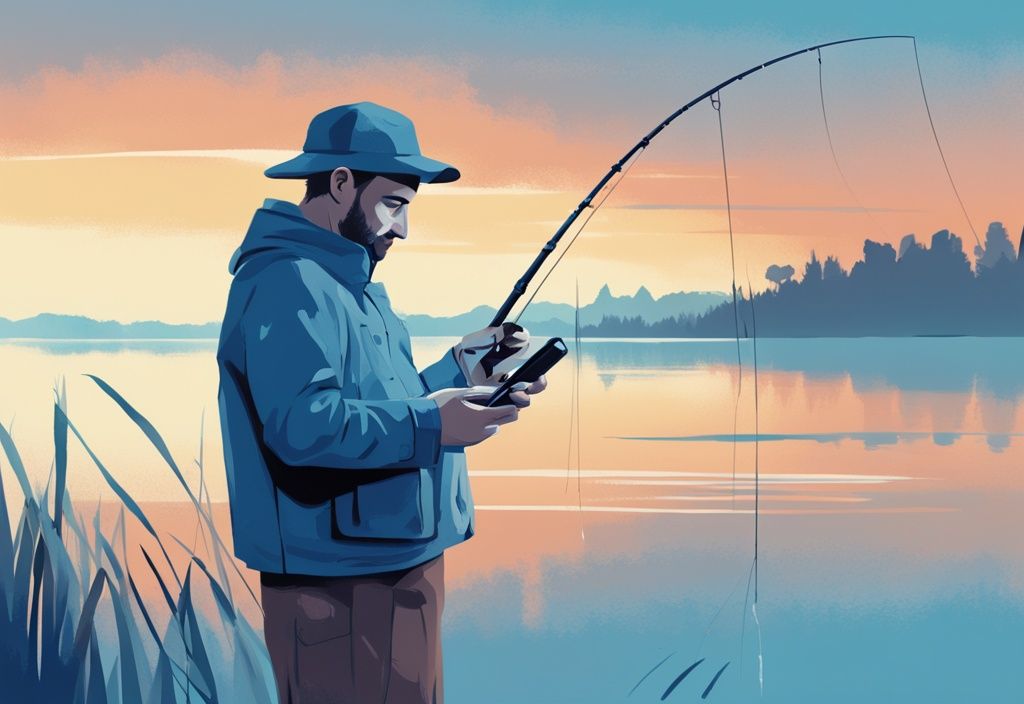
Real-Time Tracking of Barometric Pressure: A Game Changer for Anglers
The ability to track barometric pressure in real-time is undeniably a game changer for anglers. When pressures fall within the ideal range—typically 29.80 to 30.45 inHg—fish are more likely to be active and feeding. Real-time data allows us to seize these moments, increasing the likelihood of a successful catch. For instance, rapidly falling barometric pressure signals the approach of a storm—an excellent time for fishing as fish tend to behave more aggressively.
Moreover, integrating real-time barometric data with other weather factors such as wind direction, temperature, and cloud cover provides a comprehensive fishing strategy. This holistic approach helps in determining the best fishing locations and methods. Knowing when and where to fish becomes more precise, reducing guesswork and improving overall efficiency. By leveraging these modern tools, we can maximize our time on the water, making informed decisions that align with prevailing conditions and ultimately, reaping the rewards of an abundant catch.
Factoring Barometric Pressure Into the Fishing Equation
Piecing Together the Puzzle: Combining Barometric Pressure and Water Temperature
Barometric pressure and water temperature are integral to determining the best fishing conditions. Cooler water temperatures amplify the effects of pressure changes on fish behavior. During cooler periods, fish are more sensitive to fluctuations in pressure, making them more likely to change their feeding and activity patterns. Fishermen should pay close attention to this interplay, as understanding it can significantly increase the chances of a successful catch.
Stable barometric pressure combined with moderate water temperatures usually leads to the best fishing conditions. Stability provides an environment in which fish feel safe and predictable, encouraging them to feed more actively. Moderate temperatures ensure that fish are not stressed by extreme conditions, making them more approachable and eager to take bait. In these scenarios, anglers can experiment with different techniques, lures, and baits to find what works best.
Moon Phases and Its Relation to Barometric Pressure: Facts Fishers Need to Know
The phases of the moon can greatly influence barometric pressure and, consequently, fish behavior. Certain moon phases often coincide with significant pressure changes, which can either enhance or disrupt fishing conditions. Fishermen should be particularly aware of the full moon and new moon periods. During these times, substantial pressure changes are common, affecting fish activity levels.
A new moon can bring about lower pressure, leading fish to be more active and ready to feed. Conversely, a full moon is typically associated with higher pressure, which may cause fish to seek deeper water or cover, reducing their visibility and catchability. Integrating moon phase information with barometric pressure readings can provide anglers with a more comprehensive strategy, optimizing their chances for a productive outing.
Understanding and leveraging the relationship between barometric pressure, water temperature, and moon phases can significantly enhance your fishing success. By combining all these elements, anglers can pinpoint the best barometric pressure for fishing, thereby increasing their catch rate and overall fishing enjoyment.
Fish Species and Their Unique Sensitivity to Barometric Pressure
Fishing and barometric pressure go hand-in-hand, and understanding how different fish species react to these changes can mean the difference between a great day on the water and a frustrating one. Let’s dive into how species like bass, pike, walleye, and catfish respond to the shifts in atmospheric pressure and what that means for your next fishing adventure.
Understanding Bass Reaction to Pressure Changes and Its Fishing Implications
If there’s one thing I’ve learned over my two decades of fishing, it’s that bass are barometric pressure’s best friends—or maybe worst enemies, depending on how you look at it. When the pressure starts to drop, bass go on a feeding rampage. Their swim bladders make it easier for them to move to shallower waters where they become aggressive hunters. Picture it: a storm is approaching, and the pressure falls. Suddenly, the bass are in a frenzy, darting through the waters with one thing on their minds—food.
That’s precisely when anglers should be paying attention to their barometers. The best barometric pressure for fishing bass is often during these falling pressure periods. Time your outing just right, and you’re looking at a day filled with the excitement of fighting bass reacting to the pressure drop.
Exploring How Different Species React to Barometric Pressure: A Comparative Study
Not all fish react the same way to barometric pressure changes. Take pike, for example. These ambush predators thrive when the pressure drops, becoming more aggressive—almost daring other fish to enter their hunting grounds. If you’re looking to enhance your fishing experience and explore new techniques, consider subscribing to the best fishing subscription box for curated gear and tips. Imagine a pike lurking in the shadows, ready to explode into action as the pressure dials down.
Then there’s walleye. Similar to bass, walleye also pick up on decreasing pressure and ramp up their activity and feeding. It’s like a dinner bell for them, urging anglers to get their lines in the water while the bite is hot.
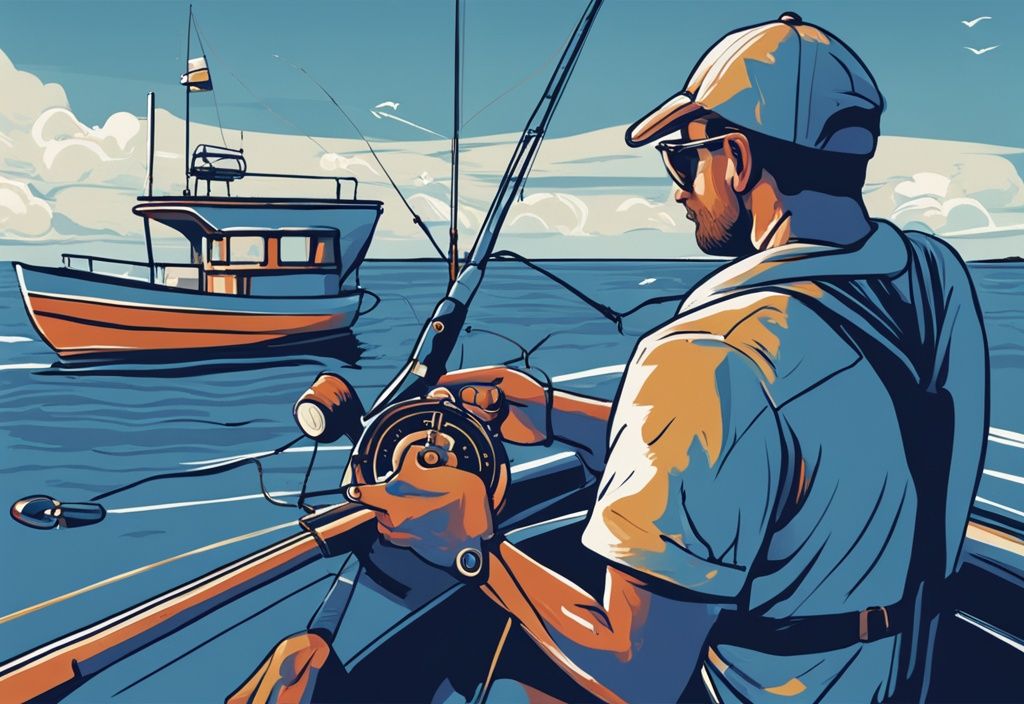
On the flip side, catfish play it cool. These bottom dwellers stick to their deep, shadowy domains, showing less dramatic shifts in behavior due to barometric changes. Factors like water temperature and food supply weigh more heavily on their habits. Even so, slight pressure changes can still nudge them into sheltering spots, slightly tweaking where you might usually find them.
Understanding these nuanced responses helps us fine-tune our strategies on the water. The best barometric pressure for fishing varies with each species, but knowing these details can seriously up your game, making every fishing trip an adventure worth remembering. Whether it’s the frenzy of a predatory pike or the steady habits of a catfish, there’s always an optimal time to cast that line.
FAQs
What is the Best Barometric Pressure for Fishing? Desired and Detrimental Ranges
The best barometric pressure range for fishing, folks, is between 29.90 and 30.90 inHg. This sweet spot is where fish tend to be most active, increasing your chances of a great catch. On the flip side, pressures below 29.60 inHg or above 30.96 inHg often create tougher fishing conditions. Ain’t nobody got time for that!
How Can I Measure Barometric Pressure for Optimum Fishing?
Measuring barometric pressure is easier than you might think. You can whip out a trusty barometer for accurate, on-site readings or use weather apps for real-time updates. These tools help you stay on top of conditions, fine-tuning your strategy to up your fishing game.
Why is Falling Barometric Pressure Often Associated with Good Fishing?
Falling barometric pressure is like a dinner bell for fish. It usually means a storm is on the horizon, triggering fish to feed aggressively before the weather shifts. So, when the pressure drops, get ready for some lively action on your line.
How Does Barometric Pressure Influence Different Fish Species?
Barometric pressure isn’t a one-size-fits-all for fish. Take bass, for instance—they go into high gear with falling pressure, becoming more active and ready to bite. Catfish, however, tend to be more laid-back and less affected by those pressure changes. Each species has its quirks, making fishing a constantly evolving challenge.
Unravelling the Relationship Between Weather and Barometric Pressure in Fishing
Weather conditions are a tangled web influencing fish behavior, and barometric pressure is just one thread. Wind direction, cloud cover, and temperature all dance together, impacting how fish behave. Understanding these intricate relationships can sharpen your fishing instincts, making your trips more fruitful and enjoyable.
In Conclusion: Mastering Barometric Pressure for Fishing Success
Understanding and utilizing barometric pressure can significantly enhance your fishing success. Factoring in these environmental cues makes for a more rewarding angling experience. Recognizing the best barometric pressure for fishing allows us to anticipate fish behavior, adapt strategies, and improve catch rates.
To master the best barometric pressure for fishing, start by getting familiar with typical pressure ranges and their impact on fish behavior. The optimal range lies between 29.90 to 30.90 inHg, with 29.80 to 30.45 inHg being particularly excellent. During these ranges, fish are generally more active and feeding aggressively. It’s the perfect time to cast your line and reel in the rewards.
In contrast, when pressures dip below 29.60 inHg or rise above 30.96 inHg, fishing conditions tend to worsen. Fish become sluggish, retreating to deeper or covered areas. Knowing these detrimental ranges means we should adjust techniques—like fishing slower and deeper—to counter less favorable conditions.
Further, a falling pressure often signals better fishing opportunities. As a storm approaches, it stimulates fish activity and feeding. Rapidly falling pressure is your cue to act quickly, boosting your catch rate dramatically. After the storm, when pressure rises, patience and slower techniques are your best bet.
However, barometric pressure isn’t the only game in town. Combine pressure data with other environmental factors like water temperature, moon phases, and weather conditions to craft a comprehensive fishing strategy. Cooler water temps can amplify pressure effects, affecting fish buoyancy and feeding patterns. Similarly, certain moon phases often coincide with pressure shifts, influencing fish behavior even more.
Utilizing modern tools such as barometers and weather apps can really up your game. These tools provide real-time data, helping you track pressure changes and adjust your fishing tactics dynamically. Embracing technology will not only boost your efficiency but also increase your chances of a successful fishing trip.
Ultimately, mastering the best barometric pressure for fishing involves continuous learning and adaptation. By integrating various environmental factors and leveraging modern tools, we can develop a nuanced understanding of fish behavior. This ongoing journey leads to more fruitful and enjoyable fishing adventures.
